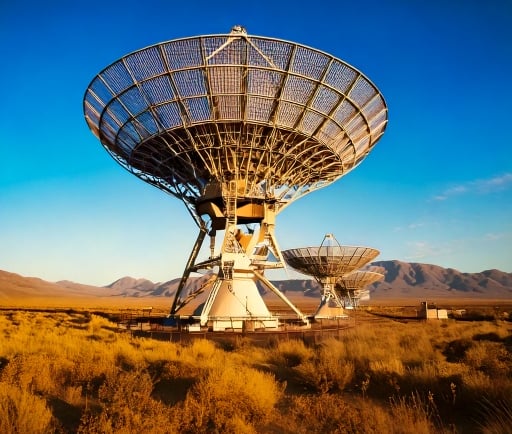Exoplanet Soundbites: The Role of Radio Telescopes in Stellar Studies


Introduction to Radio Telescopes
Radio telescopes, such as the Very Large Array (VLA) and the Atacama Large Millimeter/submillimeter Array (ALMA), represent groundbreaking advancements in astronomy. Their powerful capabilities enable scientists to investigate distant celestial bodies, including exoplanets. Through the detection of radio emissions, these telescopes unlock critical insights into the cosmic phenomena that govern the evolution of planetary systems.
Understanding Exoplanets Through Radio Emissions
Exoplanets, or planets located outside our solar system, have garnered increasing attention in contemporary astrophysics. Utilizing radio telescopes like the VLA and ALMA, astronomers can study these distant worlds by monitoring the radio emissions emanating from them. This form of analysis is vital in probing their planetary plasma environments, which influences atmospheric conditions and overall habitability.
Detecting radio emissions also allows researchers to gain a clearer understanding of the stellar activity surrounding exoplanets. Stellar flares and coronal mass ejections can significantly affect the atmospheres of orbiting planets. Thus, by tracking these emissions, radio telescopes contribute to a more comprehensive view of how exoplanets interact with their host stars, revealing the magnetic fields and atmospheric compositions that may determine their potential for supporting life.
The Impact of Radio Telescopes on Exoplanet Research
The data obtained from the Very Large Array and Atacama Large Millimeter/submillimeter Array can lead to significant breakthroughs in the field of exoplanet research. The insights provided by these observations are crucial in identifying potential biosignatures or indicators of life in the atmospheres of these planets. For instance, by studying the electromagnetic spectrum, scientists can look for specific chemical markers that signify biological processes.
Moreover, as technology progresses, the capabilities of radio telescopes will expand, enabling even finer measurements of stellar activity and exoplanetary atmospheres. The ongoing research promises to deepen our understanding of magnetic fields and atmospheric dynamics, which are essential for evaluating the habitability of exoplanets. The integration of radio astronomy with other observational technologies, such as optical and infrared telescopes, also enhances our ability to explore these distant worlds.
Conclusion
In conclusion, radio telescopes like the Very Large Array and the Atacama Large Millimeter/submillimeter Array are indispensable tools in the quest to understand exoplanets. By detecting radio emissions and probing planetary environments, they provide valuable data regarding stellar activity, magnetic fields, and atmospheric conditions. As astronomers continue to leverage these advanced technologies, we can anticipate groundbreaking discoveries that will reshape our comprehension of the universe and the potential for life beyond Earth.
